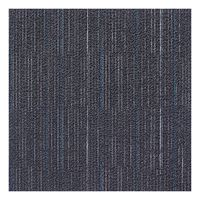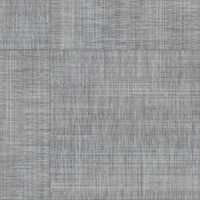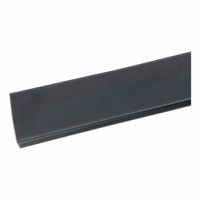Call +(254) 703 030 000 / 751 483 999 / 721 704 777
- Home
- Furnishings Appliances Hospitality
- Furnishings Building Supplies
- Flooring Tiles Wall Bases
Frequently Asked Questions
What are the benefits of using carpet tiles over traditional carpet?
Carpet tiles offer several advantages over traditional carpet:
1. **Ease of Installation**: Carpet tiles are easier to install, often requiring no professional help. They can be laid directly onto the floor without the need for underlay, reducing time and labor costs.
2. **Design Flexibility**: Available in various colors, patterns, and textures, carpet tiles allow for creative designs and custom patterns. They can be mixed and matched to create unique looks.
3. **Durability and Maintenance**: Carpet tiles are designed to withstand heavy foot traffic and are often more durable than traditional carpets. They are easy to clean and maintain, with individual tiles being replaceable if damaged or stained, rather than replacing the entire carpet.
4. **Cost-Effectiveness**: While the initial cost may be similar, the long-term savings from reduced installation and maintenance costs make carpet tiles more economical.
5. **Waste Reduction**: Carpet tiles generate less waste during installation as they can be cut to fit any space with minimal offcuts. This is more environmentally friendly and cost-efficient.
6. **Versatility**: Suitable for various environments, from commercial spaces to residential areas, carpet tiles can be adapted to different needs and styles.
7. **Improved Air Quality**: Many carpet tiles are made with low-VOC materials, contributing to better indoor air quality.
8. **Sound Absorption**: Carpet tiles provide excellent sound insulation, reducing noise levels in busy environments.
9. **Portability**: Carpet tiles can be easily removed and reinstalled, making them ideal for temporary setups or rented spaces.
10. **Moisture Resistance**: Some carpet tiles are designed to be moisture-resistant, making them suitable for areas prone to spills or humidity.
Overall, carpet tiles offer a practical, flexible, and cost-effective flooring solution compared to traditional carpets.
How do you install carpet tiles?
1. **Preparation**: Clear the room of furniture and debris. Ensure the subfloor is clean, dry, and level. Remove any old flooring if necessary.
2. **Acclimatization**: Allow carpet tiles to acclimate to the room's temperature and humidity for at least 24 hours.
3. **Planning Layout**: Measure the room to determine the center point. Use a chalk line to mark intersecting lines from the center of each wall, creating a cross that divides the room into four quadrants.
4. **Dry Layout**: Lay out tiles from the center point along the chalk lines without adhesive to ensure a balanced look. Adjust as needed to avoid small slivers of tiles at the edges.
5. **Adhesive Application**: Use a pressure-sensitive adhesive or double-sided carpet tape. Apply adhesive in one quadrant at a time, following the manufacturer's instructions. Allow it to become tacky.
6. **Tile Installation**: Start from the center point, pressing tiles firmly into the adhesive. Align tiles with the chalk lines, ensuring the arrows on the back of tiles point in the same direction for a uniform look.
7. **Cutting Tiles**: For edges and corners, measure and cut tiles using a utility knife and straightedge. Place the cut edge against the wall.
8. **Finishing Touches**: Roll over the tiles with a carpet roller to ensure adhesion. Trim any excess material and install baseboards or transition strips if needed.
9. **Clean Up**: Remove any adhesive residue and vacuum the tiles to remove dust and debris.
10. **Final Inspection**: Check for any loose tiles or gaps and make necessary adjustments. Allow the adhesive to cure as per the manufacturer's instructions before placing furniture back.
Can carpet tiles be used in high-traffic areas?
Yes, carpet tiles can be used in high-traffic areas. They are designed to withstand heavy foot traffic and are a popular choice for commercial spaces like offices, airports, and retail stores. Carpet tiles offer several advantages for high-traffic areas:
1. **Durability**: Made from robust materials such as nylon or polypropylene, carpet tiles are engineered to endure wear and tear. They often come with a dense pile and strong backing, enhancing their resilience.
2. **Easy Maintenance**: Carpet tiles are easy to clean and maintain. Individual tiles can be removed for cleaning or replacement if they become stained or damaged, which is more cost-effective than replacing an entire carpet.
3. **Design Flexibility**: Available in various colors, patterns, and textures, carpet tiles allow for creative design solutions. They can be arranged in different configurations to create unique patterns or to designate specific areas within a space.
4. **Installation and Replacement**: Carpet tiles are simple to install, often using a peel-and-stick method or adhesive, which reduces installation time and costs. If a tile is damaged, it can be replaced without disturbing the surrounding tiles.
5. **Acoustic and Comfort Benefits**: Carpet tiles provide sound absorption, reducing noise levels in busy environments. They also offer underfoot comfort, which can be beneficial in areas where people stand or walk frequently.
6. **Sustainability**: Many carpet tiles are made from recycled materials and are recyclable themselves, making them an environmentally friendly option.
Overall, carpet tiles are a practical and versatile flooring solution for high-traffic areas, combining durability, ease of maintenance, and aesthetic appeal.
What is the best way to clean and maintain carpet tiles?
To clean and maintain carpet tiles effectively, follow these steps:
1. **Regular Vacuuming**: Vacuum carpet tiles at least once a week to remove dirt and debris. Use a vacuum with a rotating brush or beater bar for best results. For high-traffic areas, increase the frequency.
2. **Spot Cleaning**: Address spills immediately to prevent stains. Blot the spill with a clean, dry cloth to absorb as much liquid as possible. Avoid rubbing, as it can spread the stain. Use a mild carpet cleaner or a mixture of water and white vinegar for spot cleaning. Test any cleaning solution on an inconspicuous area first.
3. **Deep Cleaning**: Perform deep cleaning every 6-12 months. Use a carpet cleaning machine with a gentle detergent suitable for carpet tiles. Follow the manufacturer's instructions for both the machine and the detergent. Ensure the tiles are thoroughly dry before walking on them to prevent mold and mildew.
4. **Tile Rotation**: Rotate carpet tiles periodically to ensure even wear. This is especially important in high-traffic areas. Simply swap tiles from less trafficked areas with those in busier spots.
5. **Replacement**: One of the advantages of carpet tiles is the ease of replacement. If a tile is damaged or stained beyond repair, replace it with a new one. Keep spare tiles from the original installation for this purpose.
6. **Preventive Measures**: Use entrance mats to reduce the amount of dirt tracked onto the carpet tiles. Encourage a no-shoes policy or use shoe covers in areas with carpet tiles.
7. **Professional Cleaning**: Consider professional cleaning services annually or as needed, especially for large areas or stubborn stains.
By following these steps, you can maintain the appearance and longevity of your carpet tiles.
How do you replace a damaged carpet tile?
1. **Gather Tools and Materials**: You will need a utility knife, adhesive remover, replacement carpet tile, double-sided carpet tape or adhesive, and a straightedge.
2. **Remove the Damaged Tile**: Use the utility knife to cut along the edges of the damaged tile. Be careful not to damage adjacent tiles. Lift the tile using the knife or a putty knife.
3. **Clean the Area**: Remove any remaining adhesive or debris from the floor using adhesive remover. Ensure the area is clean and dry before proceeding.
4. **Prepare the Replacement Tile**: If the new tile has directional arrows on the back, align them with the existing tiles to maintain the pattern. Trim the tile if necessary to fit the space.
5. **Install the New Tile**: Apply double-sided carpet tape or adhesive to the floor where the new tile will be placed. Position the replacement tile carefully, ensuring it aligns with the surrounding tiles.
6. **Secure the Tile**: Press down firmly on the tile to ensure it adheres properly. Use a straightedge to ensure the tile is level with the surrounding tiles.
7. **Check the Installation**: Walk over the tile to ensure it is secure and level. Make any necessary adjustments.
8. **Clean Up**: Dispose of the old tile and any debris. Clean the area to remove any adhesive residue.
9. **Final Inspection**: Ensure the new tile is properly aligned and secure. Make sure the pattern and pile direction match the surrounding tiles.
Are carpet tiles environmentally friendly?
Carpet tiles can be environmentally friendly, depending on several factors. Many manufacturers are now focusing on sustainability by using recycled materials in the production of carpet tiles. These materials often include recycled nylon or polyester, which reduces the demand for new raw materials and minimizes waste. Additionally, some carpet tiles are designed to be recyclable at the end of their life cycle, further reducing their environmental impact.
The modular nature of carpet tiles also contributes to their eco-friendliness. They allow for selective replacement, meaning only damaged or worn tiles need to be replaced rather than the entire carpet. This reduces waste and extends the overall life of the flooring.
Moreover, some carpet tiles are produced using low-VOC (volatile organic compounds) adhesives and backing materials, which improve indoor air quality and reduce harmful emissions. Manufacturers may also employ energy-efficient production processes and sustainable sourcing practices, such as using renewable energy and obtaining materials from responsibly managed sources.
However, not all carpet tiles are created equal. The environmental impact can vary significantly based on the materials used, the manufacturing process, and the end-of-life disposal options. It's important for consumers to research and choose products that have certifications like Cradle to Cradle, Green Label Plus, or other eco-labels that indicate a commitment to sustainability.
In summary, while carpet tiles have the potential to be environmentally friendly, their actual impact depends on the specific product and manufacturer practices. Opting for tiles made from recycled materials, with low VOC emissions, and that are recyclable can enhance their eco-friendliness.
What are the cost differences between carpet tiles and other flooring options?
Carpet tiles generally offer a cost-effective flooring solution compared to other options. They typically range from $2 to $15 per square foot, depending on quality and design. Installation costs are lower due to their modular nature, which simplifies the process and reduces labor expenses. Additionally, individual tiles can be replaced if damaged, minimizing long-term maintenance costs.
In contrast, traditional broadloom carpet costs between $3 and $7 per square foot, with higher installation costs due to the need for stretching and seaming. Hardwood flooring is more expensive, ranging from $6 to $18 per square foot, plus higher installation fees due to the complexity of fitting and finishing. Laminate flooring is more affordable, costing between $1 and $5 per square foot, but may incur additional costs for underlayment and installation.
Vinyl flooring, including luxury vinyl tiles (LVT), ranges from $2 to $7 per square foot. While installation is relatively straightforward, the material may not offer the same durability as carpet tiles. Ceramic or porcelain tiles cost between $5 and $15 per square foot, with high installation costs due to the need for specialized labor and materials like grout and sealant.
Overall, carpet tiles provide a competitive price point with advantages in installation and maintenance, making them a popular choice for both residential and commercial spaces.


